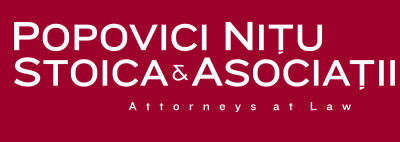- About Us
-
Expertise
- Banking & Finance
- Capital Markets
- Competition & Antitrust
- Corporate & Commercial
- Data Privacy
- Employment & Pensions
- Energy & Natural Resources
- Gambling & Betting
- Healthcare & Pharmaceuticals
- Insurance
- Intellectual Property
- International Arbitration
- Litigation
- Mergers & Acquisitions
- Project Finance/PPP, Concessions & Infrastructure
- Public Procurement
- Real Estate
- Restructuring & Insolvency
- Sports Law
- Tax
- Telecommunications, Media & Technology
- Transports & Logistics
- White Collar Compliance & Defense
- Our team
- Careers
- Publications
- News and Press
- Contact
Articles
Cash accounting scheme for VAT - A new reality
After a long series of speculations, the Fiscal Code amendments implementing the special cash accounting scheme for VAT has finally been published at the end of August.
Long awaited as the solution for a simpler, more cash-flow friendly system for small and medium taxpayers, the measure has been expected to bring a needed flow of oxygen.
But as always, the devil is in the details… Given the great number of entities affected, it is crucial to understand what the changes entail, as well as the preparations which need to be made.
Scope and entry into force
The new provision enters into force as of January 1, 2013.
While the VAT Directive provided for an optional scheme, its implementation into the legislation has made the scheme mandatory for a large number of companies (estimated at roughly 90%).
The scheme applies to entities with a turnover below RON 2,250,000 in the period October 2011 – September 2012 (a notification must be filed by October 25, 2012). In going forward, the scheme will also be applicable to entities with a previous year threshold below the mentioned one, as well as to entities which register for VAT purposes throughout the year.
The scheme does not apply for all supplies (such as transactions with related parties, most cases where payment in cash occurs, etc), which is likely to complicate the practical implementation.
Envisaged mechanism
Under the new mechanism, VAT becomes chargeable upon encashment of the issued invoices, but no later than 90 days from the date the invoice was raised (or should have been raised). As such, the title of “cash accounting scheme” is misleading, as the encashment moment does not always correspond to the VAT liability.
In addition, input VAT deduction is blocked both for the customer (until the payment is performed), as well as for certain acquisitions of the entity applying this scheme (again, until payment).
Intricate mechanisms are applicable in case of transaction adjustments (price increases/decreases, annulments, etc), as well as for transitory measures (invoices issued/payments made under current rules in connection to transactions to be performed under the new rules).
Impact and challenges
Going beyond the concerns related to the compatibility of specific provisions with the VAT neutrality principle (e.g. the supplier has to pay VAT after 90 days regardless of encashment, while the beneficiary cannot deduct VAT until the payment date), the transition to the new system is likely to entail huge admistrative efforts and notable costs for companies.
Having in mind the approaching implementation deadline, which overlaps with an already busy period for accounting and tax personnel, it is crucial for companies to clearly identify the steps which need to be taken in order to be compliant.
As a first step, transactions will need to be mapped in order to assess the future treatment (difficult at this stage, due to lack of application norms).
As a second step, the accounting and tax software will need to be reconfigured, as the future VAT ledgers cannot be automatically extracted from the information currently available (with related costs and bottlenecks). A quick fix may be the manual processing of the adjustments entailed by the new scheme, but this entails an additional workload, increased risk of errors and it may simply not be feasible for large companies (which are impacted as well, for the acquisitions made from companies falling under the new scheme).
In such circumstances, a true “flow of oxygen” would be the amendment of the legislation in order to allow the implementation of this scheme on an optional basis.
Download Article










